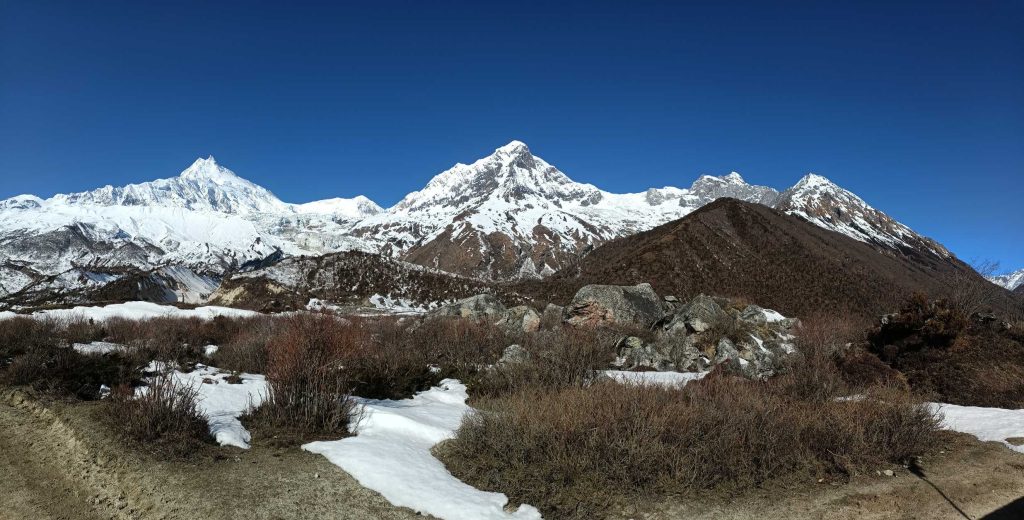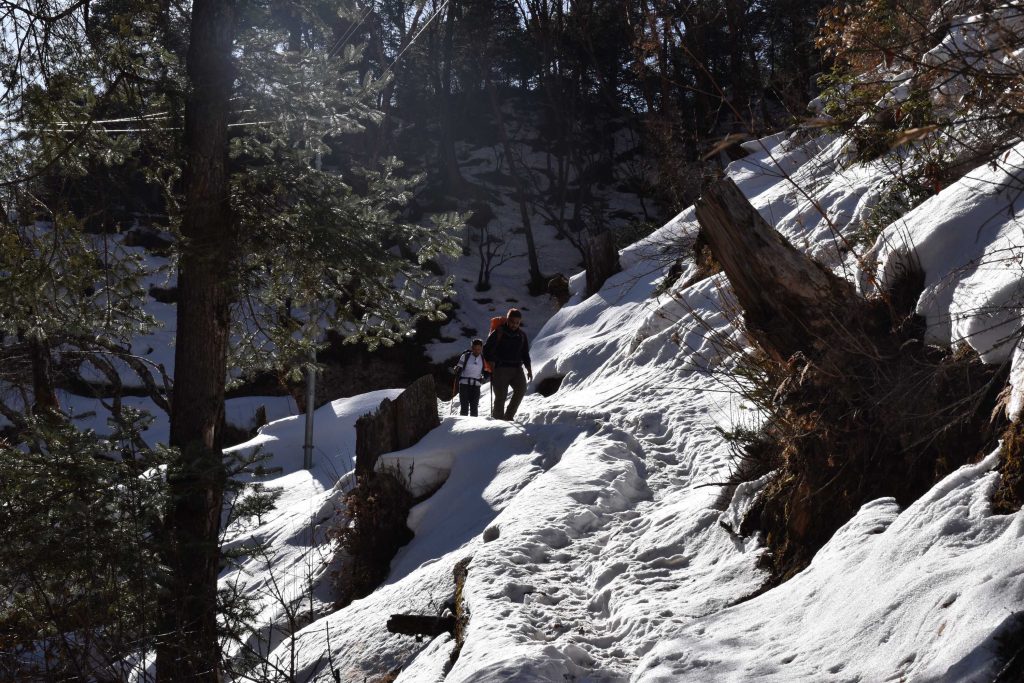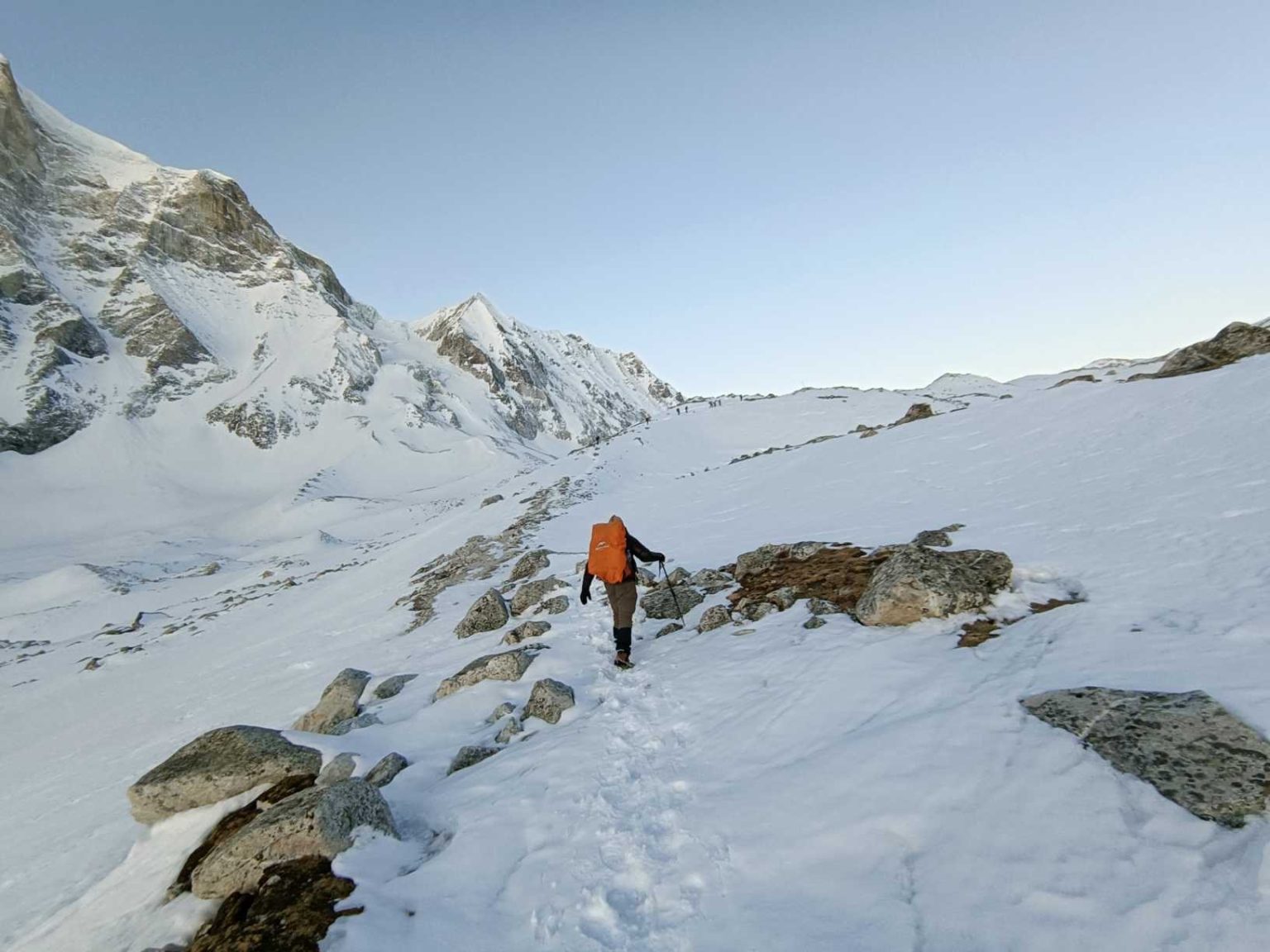Going on the Manaslu Circuit Trek is a big dream for many people. The trip offers amazing views of the world’s eighth highest mountain. You also see unique cultures and feel great satisfaction after finishing the trek. People often focus hard on getting physically ready. They train their bodies for the long hiking days and the tough Larkya La Pass. But there is another important part of the journey, especially for first-time high-altitude trekkers. This is the mental and emotional side of the trek. It is often overlooked but very important.
This guide will help you prepare your mind for the Manaslu Circuit. We will talk about common worries people have. We will help you know what to really expect. We will also give you useful tips to build mental strength. Having the right mindset helps you stay safe. It also helps you enjoy this amazing Himalayan adventure much more.
What to Expect Mentally on Manaslu
Knowing what might happen in your mind can lower your anxiety. It helps you handle challenges better when they appear.
- Altitude Worries: Many first-time trekkers worry about Altitude Sickness (AMS). It helps to know the difference between normal body changes and serious problems. Feeling a bit breathless when you work hard is normal. Needing more sleep or having a mild headache can also happen as your body adjusts to less oxygen. These things usually get better if you drink water, rest, and maybe take a simple pain reliever. Serious AMS is different. Signs include losing coordination (trouble walking straight), feeling extremely tired, being confused, or having a very bad headache that doesn’t go away with medicine. AMS is a real risk, but you can greatly lower the risk by following a good acclimatization plan. Worrying too much doesn’t help. Instead, focus on things you can control, like your walking speed and talking to your guide.

- Simple Living & Being Far Away: Manaslu is a teahouse trek. Teahouses provide food and shelter, but they are simple. Do not expect luxury hotels. Rooms are basic, and you might share with others. Bathrooms can be simple squat style or sometimes western style, and they might be outside. Charging phones or using Wi-Fi costs extra and is not always available, especially higher up. It helps to think of these simple conditions as part of the adventure. Being far away from cities and constant internet can actually be nice. It lets you connect more with nature and the people around you.
- Long Days & Feeling Tired: Some days on the Manaslu trek are long. You might walk for many hours, often uphill or downhill. Being physically tired affects your mood and your willpower. You should expect moments where you feel very tired. Just putting one foot in front of the other might seem hard. Knowing this can happen helps you prepare mentally. Walk slowly and steadily. This saves energy. Focus on consistent progress, not speed. This mental approach is very important.
- Dealing with Surprises: Things can change in the mountains. The weather might turn quickly. Trails could be blocked by snow or landslides. You might feel great one day and tired the next for no clear reason. You cannot control everything. Being flexible and willing to adapt is a key mental skill. If plans need to change, accept it. Being adaptable shows mental strength.
Coping Tips for the Trail
When you are actually trekking, use these tools to handle the mental side:
- Take Small Steps (Chunking): A long day or a big climb can feel overwhelming. Don’t think about the entire distance left. Break it down into smaller parts. Focus on reaching the next village, the next bend in the trail, or even just taking the next 10 steps. Feel good about finishing each small part.
- Use Your Breath: Your breathing can calm your mind and body. If you feel anxious, tired, or stressed, focus on your breath. Breathe in slowly and deeply through your nose, feeling your belly expand. Breathe out slowly through your mouth. Repeat this a few times.
- Stay in the Moment: Pay attention to what’s around you right now. Use your senses. Notice the sound of your boots on the trail. Smell the mountain air. Feel the sun or wind on your skin. Look at the details in the landscape or the prayer flags. Focusing on the present stops your mind from worrying about the future.
- Talk Kindly to Yourself: Listen to your thoughts. If you catch yourself thinking negative things like “I’m too slow” or “I can’t make it,” stop. Replace those thoughts with positive but realistic ones. Try saying, “I am going at my own pace,” “This is hard, but I am strong,” or “Every step gets me closer.” Think of challenges as chances to learn and grow.
- Use Your Support: You are not trekking alone, even if you feel that way sometimes. Talk to your guide. They have experience helping trekkers through tough spots. Share how you are feeling with your group members. Often, others feel the same way. Helping and encouraging others can also make you feel better.
- Accept Discomfort: Sometimes on a trek, you will feel cold, tired, or uncomfortable. This is normal. It doesn’t mean something is wrong or you are failing. Acknowledge the feeling without fighting it too hard. Tell yourself, “Okay, I feel tired right now.” Then, take a breath and refocus on your next small goal.
Handling Altitude Worries Specifically
Worries about altitude need special attention:
- Know Normal vs. Serious Signs: Learn the real danger signs of serious AMS. Good sources like the Himalayan Rescue Association can help. Know that mild headache or faster breathing can be normal adjustment. Serious signs like trouble walking, extreme tiredness, or bad headache need quick action. Knowing the difference helps you worry less about normal feelings.
- Trust the Plan: The trek itinerary includes rest days and slow climbing. This plan helps your body adjust to the altitude. Trust this process. Don’t try to go faster than the plan, even if you feel good.
- Speak Up Quickly: This is very important. Tell your guide immediately if you have any symptoms that worry you. Do not hide symptoms because you feel embarrassed or don’t want to slow down the group. Your safety comes first. Honest communication is key.
- Focus on What You Can Do: You cannot change the altitude. But you can control how much water you drink (drink a lot!). You can control your walking speed (go slowly!). You can control talking to your guide (be honest!). Focusing on these actions helps you feel more in control.
Conclusion: Get Ready for the Mental Climb

Preparing for the Manaslu Circuit involves more than just physical training. Getting your mind ready is just as important for a safe and enjoyable trek. The mental journey has its own challenges. You might face self-doubt. You will find inner strength. You will adapt to simple living. You will learn to be present in an amazing place. These mental challenges are part of what makes the trek so rewarding.
Think about the mental side before you go. Practice coping skills. Know what to expect. This preparation helps you face difficulties with more confidence. It lets you appreciate the beauty and culture of Manaslu even more.
A ready mind helps you enjoy the trek more. Make sure your head is prepared along with your gear. Get the Manaslu Circuit Trek Details here. It covers the itinerary, permits, packing lists, and everything else you need to plan your trip. This lets you focus on getting your body and mind ready for the adventure.



